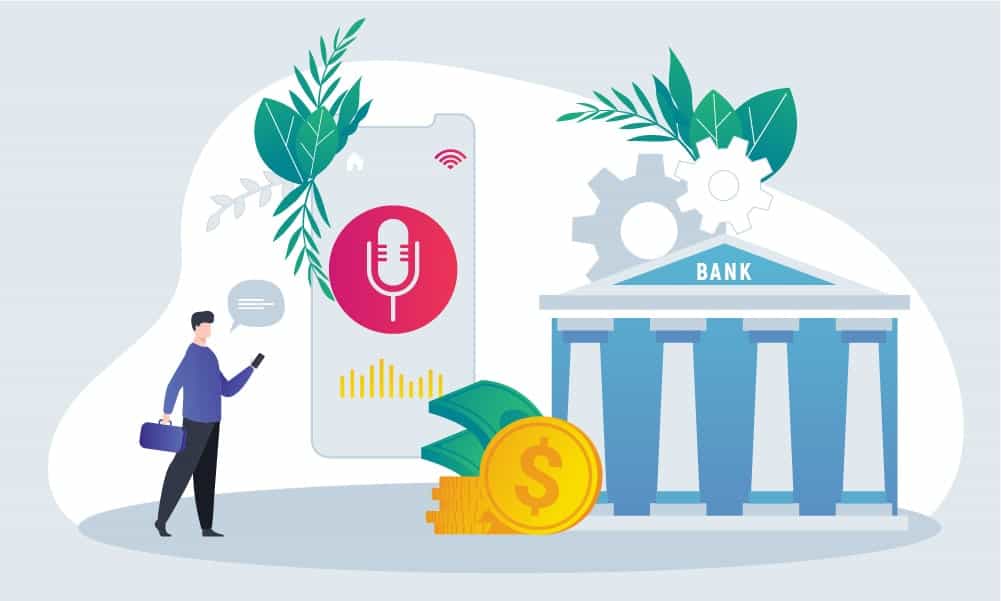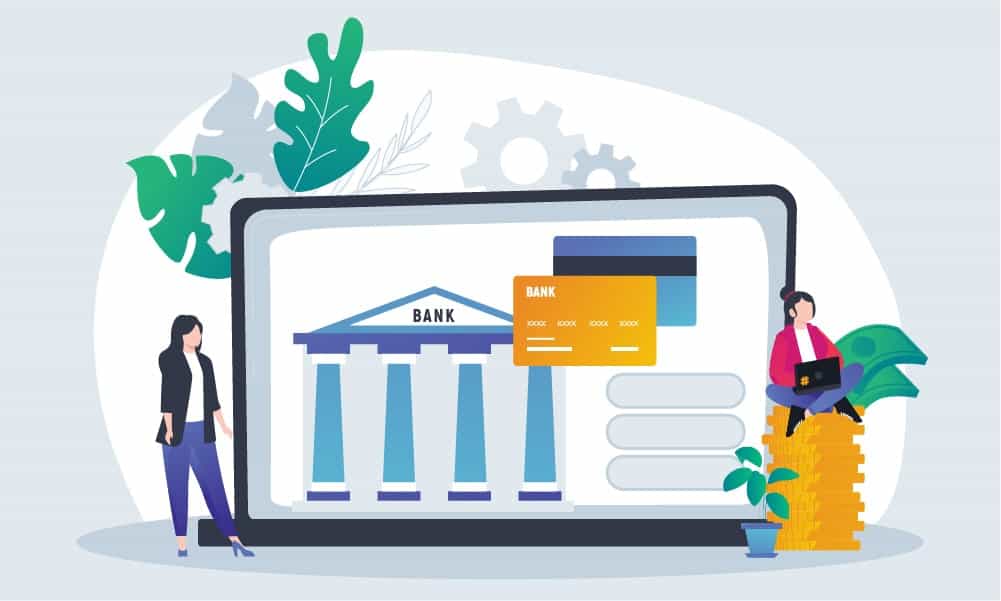Mobile banking has become increasingly popular in recent years. It has grown to be an essential tool in the lives of more and more people all over the world. No wonder: it is a convenient and straightforward way to manage your funds. And even though mobile banking has numerous advantages, it also has some minuses. How has electronic banking changed banking services? What are mobile banking's advantages and disadvantages?
Electronic banking drastically changed the banking service experience for every smartphone owner. Technological progress allowed mobile banking to develop an absolutely revolutionary approach to the whole money managing experience. This article aims to demystify the concept, providing insights into the question: What is Mobile Banking? Together, we will uncover the core aspects of mobile banking, examining its advantages, potential challenges, and the profound influence it exerts on modern financial interactions.
- What is Mobile Banking?
- Top Mobile Banking Advantages
- Improved customer experience
- Time efficiency
- Workload capacity
- Monitoring transactions
- Added services
- Enhanced security
- Catch the fraud
- Managing funds
- Mobile Banking Disadvantages
- Security
- Tech issues
- Dependency on technology
- Consider Inoxoft as Your Trusted Partner
- Final Thoughts
What is Mobile Banking?
Mobile banking refers to the use of mobile devices, such as smartphones and tablets, to perform various banking activities and transactions. It is a convenient and accessible way for individuals to manage their finances on the go, without the need to visit a physical bank branch. Mobile banking services are typically offered by banks and financial institutions through dedicated mobile apps or mobile-friendly websites.
One of the primary features of mobile banking is the ability to check account balances and transaction history in real-time. Users can easily monitor their financial activities, track expenses, and stay informed about their available funds. With the help of mobile banking, individuals have immediate access to account information, which allows them to make informed financial decisions without delay.
Another key aspect of mobile banking is the ability to transfer funds between accounts, pay bills, and send money to friends or family members with just a few taps on their mobile devices. This functionality enhances the efficiency of financial transactions and reduces the reliance on traditional methods such as writing checks or visiting physical bank locations.
Get to know what can you get out of big data analytics for financial services!
One of the financial services technology trends is the move to digital, especially in mobile banking. Our society becomes completely cashless which is evident after a year of the pandemic. The prevalence of online and mobile banking is anticipated to exhibit a consistent rise in 2024, with the Asian market emerging as the predominant player. Projections suggest that this figure is poised to approach the one-billion mark this year.
Read more: how to start a neobank from scratch
Top Mobile Banking Advantages
Let’s talk about the mobile banking advantages for both, financial institutions and clients.
Improved customer experience
When it comes to the banking business, a relationship with a customer is key. By maintaining a good, respectful, and healthy relationship with the client, you have higher chances to both keep them and attract new ones. Being available 24/7, mobile banking is great for those who are not always able to visit the actual facility during its working hours.
Time efficiency
You can use a banking app to pay for your bills, rent, or utility fee online and never worry about the possibility of your physical check getting lost in the mail. Most banks have an option to set up payees, and once you fill-up the information, such as amount, credit card info, and receiver you are ready to go. After that, you just choose that one paying option anytime you have to pay.
As we’ve discussed already some of the pros and cons of mobile banking, here are essential features of the mobile banking apps:
- 24/7 access to your account
- Possibility of money transfers
- High-level security
- Fraud alerts
- Customer support line
- Cashback
- Loan payments
- Bill payment alerts
- Range of other services (e.g. pay for public transport)
In the modern world, you would prefer your daily tasks to be simplified as much as possible, and the digital banking system fulfills this wish. Not only the system saves your time by eliminating the need to go out and pay a visit to a physical bank, but it also can help you with optimizing your money and managing expenses.
Workload capacity
Mobile banking eliminates the human factor during different work operations. Plus it boosts productivity and quality and causes a lot of issues clients can fix by themselves through an app.
Monitoring transactions
Among other benefits of mobile banking services is the ability to monitor and manage all your financial transactions. You can monitor your bank accounts and prevent fraudulent transactions if such occur, by logging in to your mobile banking app.
Added services
Another advantage of mobile banking apps is the larger number of advanced services compared to traditional financial institutions. The app lets you not only control your funds remotely but also deposit a check, activate a new credit or debit card, block it per need and send someone money whenever you want.
Enhanced security
Money matters have always been sensitive. Security is an essential aspect of bank business and applies to both guarding your assets and your interactions on the apps. Since it’s not your social media account where the username and password would be enough to get access, it takes more than that to sign in to a banking app.
Most banking apps require multi-factor authentication, where you have to use your phone number, mail, id, or even a fingerprint and a face scan. Furthermore, this kind of authentication is also required to complete any transactions, no matter how much you plan to send. These measures are taken for maximum security since there is always a possibility of a hazard or intended harm.
Need personalization in banking industry? Give us a call!
Catch the fraud
Despite several benefits and drawbacks of mobile banking, another convenience of using it is that you can catch account fraud a lot quicker if you’re linked up to your app. You can log in as much as you need or turn on notifications to get transaction alerts. That way you know if something unusual is happening. If you check your account activity regularly you might catch unfamiliar transactions and so forth.
Managing funds
The mobile banking app serves as a remote control for your funds. The app allows you to perform tasks on your bank balance and send someone the money wherever you are and whenever you want. Online banking also offers a feature to instantly deactivate your credit card if it ever goes missing. In case of finding the lost card, you can easily turn it back on with just one tap.
Moreover, as a client, you can see and manage where you have your credit cards stored. Also, you can manage your monthly subscriptions and cancel the ones you do not use anymore. Another benefit of mobile banking suggests that you have 24/7 access to your accounts, which allows you to keep an eye out on your funds, as you can monitor your spending whenever you wish.
Mobile Banking Disadvantages
How secure are banking apps? Despite the bank’s best efforts to keep its customers out of harm’s way, the system is not 100% reliable yet. Although most ordinary users never face any cyber threats, some unlucky individuals still do. The users of mobile banking systems are vulnerable to fake notifications and scams, as well as robbers and pickpockets. If you lose your phone, the criminal who stole or finds it may try to log into your bank account. And as we know, it will cause a lot of trouble.
There are a lot of merits and demerits of mobile banking, so let’s discover things that are better to avoid.
Security
Even though banks are trying their best to develop the safest, most secure system, they usually fail to do so. The researchers state that 97% of banking apps presented insufficient code protection. 90% of those experienced information leakages to other apps on devices, and 83% of solutions using APIs just stored data mindlessly, letting hackers steal it. And in 80% of products, the encryption methods were not efficient enough.
After the COVID-19 crisis took over the world, so did the criminals. In the wake of the global pandemic, hackers tend to perform illegal activities much more often than before. A survey that was conducted by CrowdStrike stated that 59% of participants did not believe that their business would experience any serious cybercrime during the COVID-19 crisis, yet CrowdStrike has confirmed 100 times more COVID-19-related malicious acts.
450 active World Health Organization email accounts and passwords were leaked online alongside thousands belonging to other individuals and organizations researching the recent coronavirus response. Paul Chichester, the Director of Operations at the National Cyber Security Center in the UK stated:
We know that cybercriminals are opportunistic and will look to exploit people’s fears, and this has undoubtedly been the case with the Coronavirus outbreak
Tech issues
Software glitches and bugs within mobile banking applications may lead to errors in transaction processing, inaccurate balance displays, or unexpected app crashes. Such occurrences can be frustrating for users and may undermine their confidence in the reliability of mobile banking platforms.
Overall security vulnerabilities represent a critical aspect of technical concerns in mobile banking. Cyber threats, malware, and phishing attacks can exploit weaknesses in the mobile banking infrastructure, putting users’ sensitive financial information at risk. Financial institutions must continually invest in robust cybersecurity measures to safeguard against evolving threats in the digital landscape.
Everything you need to know about mobile application architecture.
Dependency on technology
Relying on smartphones and internet connectivity introduces barriers that hinder access for certain user groups. In remote areas with limited network coverage, individuals may face challenges engaging in mobile banking services, perpetuating a digital divide. Smartphone affordability becomes a critical factor, as those unable to afford these devices are excluded from the convenience offered by mobile banking platforms.
Technological literacy issues, especially among the elderly or those less familiar with digital interfaces, can impede independent financial management. Additionally, device compatibility problems and the risk of obsolescence may further limit accessibility, creating disparities in mobile banking adoption based on economic and technological disparities.
Consider Inoxoft as Your Trusted Partner
Inoxoft is an experienced mobile app development company with a narrow focus on fintech development services and even more specifically, on banking software development services. Our solutions have always been helpful tools in our client’s businesses.
Build money remittance software the right way with Inoxoft!
Final Thoughts
One of the numerous benefits of mobile banking is saving up to 26 hours and 434$ per year. Furthermore, several major banks like Wells Fargo recently provided their users with money guidance on their mobile apps, allowing them to save even more time and let the machine do all the work. No counting, no paper mess – everything you need right at your fingertips, just one click away from you.
All in all, using mobile banking is a huge improvement in the day-to-day activities of anyone who deals with money — starting with casual grocery shopping and to stock traders. Yes, mobile banking has its own flaws and security loopholes. Nevertheless, the concept is promising and has been successfully used worldwide by thousands of people.
Frequently Asked Questions
What are the advantages and disadvantages of mobile banking
The advantages of mobile banking include 24/7 access to funds, convenient way of paying bills, taxes, and loans.
The top disadvantage of mobile banking is potential security risks, tech issues, and extra charges for services.
What are the benefits of mobile banking to banks?
Mobile banking gives institutions advantages including the availability to store more data with help of automation, loyal customers who enjoy convenience, and a variety of services. Read our article to learn more.
What are the benefits of mobile banking to customers?
The benefits of mobile banking for users include time efficiency, the possibility to manage funds, transfer money, and detect frauds quickly. Also with the help of digital banking users have 24/7 access to their accounts (including the possibility to check balance) and reminders about bills payments, loans, etc.











